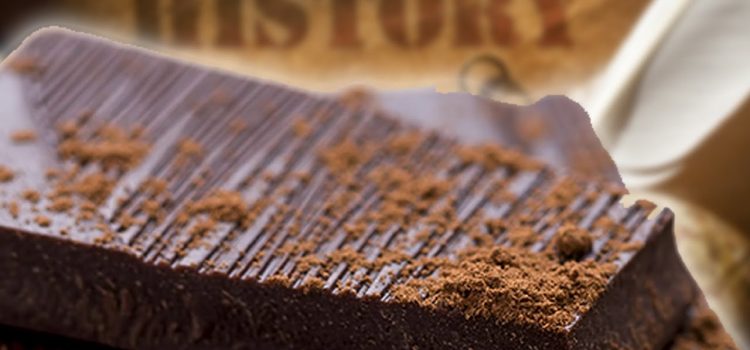
Introduction: Chocolate’s Journey Through Time
Chocolate is one of the world’s most beloved treats. It’s rich, smooth, and comes in many delicious forms—bars, truffles, cakes, and hot drinks. But did you know that chocolate has been enjoyed for thousands of years? And it didn’t start as the sweet treat we know today.
The history of chocolate is a journey that begins in ancient times. What started as a bitter drink used in religious rituals has transformed into a global delight. From Mayan ceremonies to European palaces, and eventually into everyday snacks, chocolate has a sweet story worth telling.
This article explores the evolution of chocolate from an ancient elixir to a modern treat. Get ready to unwrap the past and discover how this magical bean became a worldwide obsession.
Ancient Beginnings: The Sacred Cacao Bean
Long before chocolate bars existed, cacao beans were prized by ancient Mesoamerican civilizations like the Olmecs, Mayans, and Aztecs.
The Olmecs: The First to Discover Cacao
The Olmecs, one of the earliest civilizations in Central America (around 1500 BCE), are believed to be the first to process and consume cacao. They likely used it to create a drink for rituals and healing.
The Mayans: Chocolate as a Spiritual Elixir
The Mayans considered cacao sacred. They used it in religious ceremonies, weddings, and offerings to the gods. Mayan nobles drank a frothy, bitter chocolate drink flavored with chili peppers, vanilla, and spices. It was believed to bring strength, vitality, and even divine wisdom.
Cacao beans were so valuable that they were even used as currency.
The Aztecs: Power and Prestige
The Aztecs adopted the cacao tradition and elevated it further. They believed chocolate was a gift from the god Quetzalcoatl. Only royalty, warriors, and priests could drink it. The famous Aztec emperor Montezuma reportedly drank chocolate multiple times a day to boost his energy and power.
But this early chocolate wasn’t sweet—it was bitter, spicy, and cold.
Chocolate Reaches Europe: A Royal Indulgence
Chocolate’s big change came when Spanish explorers arrived in the Americas in the 1500s. They took cacao beans back to Europe, where it began its transformation.
Sweetening the Taste
Europeans found the bitter chocolate drink too harsh, so they began mixing it with sugar, cinnamon, and milk. This turned it into a warm, sweet, and comforting drink—very different from the Aztec version.
A Drink for the Elite
For a long time, chocolate was a luxury only the rich could afford. It was served in royal courts across Spain, France, and Italy. Drinking chocolate became a symbol of status and wealth.
By the 1600s and 1700s, chocolate houses (similar to coffee houses) opened in major cities like London, where people gathered to drink chocolate and discuss politics and art.
The Industrial Revolution: Chocolate for the Masses
The 1800s brought major changes to chocolate production. New inventions made it easier and cheaper to produce chocolate on a large scale.
1828: Cocoa Powder Is Born
Dutch chemist Coenraad van Houten invented a press that could remove much of the fat (cocoa butter) from cacao beans, leaving a dry cake that could be ground into powder. This made chocolate easier to mix with liquids and more affordable.
1847: The First Chocolate Bar
In England, Joseph Fry discovered that by adding melted cocoa butter back into the powder, he could create a moldable paste. This led to the world’s first solid chocolate bar.
1875: Milk Chocolate Enters the Scene
Swiss chocolatier Daniel Peter, with the help of Henri Nestlé, created the first milk chocolate bar by mixing chocolate with condensed milk. It became a worldwide sensation.
Chocolate in the Modern Era: Sweet and Everywhere
By the early 1900s, chocolate was no longer just for the elite—it was for everyone. Major brands like Hershey’s, Cadbury, Lindt, and Nestlé helped make chocolate affordable and widely available.
Chocolate in Wartime
During World War I and II, chocolate was included in soldiers’ rations. It provided energy and comfort, boosting morale on the battlefield.
Candy Bars and Innovations
From Snickers to KitKat, the 20th century brought a wave of new chocolate products. Chocolate became a key ingredient in cakes, cookies, ice creams, and cereals.
Health Benefits of Chocolate: Not Just a Treat?
Surprisingly, chocolate—especially dark chocolate—has some health benefits when eaten in moderation.
Rich in Antioxidants
Dark chocolate contains flavonoids, antioxidants that may help protect the heart and reduce inflammation.
Mood Booster
Chocolate helps the brain release endorphins and serotonin, the “feel-good” chemicals.
Brain Function
Some studies suggest chocolate can help improve focus, memory, and brain health due to its content of theobromine and caffeine.
However, it’s best to choose chocolate with high cacao content and less sugar for maximum benefit.
Table: Timeline of Chocolate’s Evolution
| Year/Period | Event |
|---|---|
| ~1500 BCE | Olmecs use cacao in rituals |
| ~600 CE | Mayans develop frothy cacao drink |
| 1400s | Aztecs use cacao as currency and in ceremonies |
| 1500s | Spanish explorers bring chocolate to Europe |
| 1828 | Van Houten invents cocoa powder |
| 1847 | First solid chocolate bar by Fry’s |
| 1875 | Milk chocolate created by Peter and Nestlé |
| 1900s–Present | Chocolate becomes a global sweet treat |
Fun Chocolate Facts
- Cacao trees only grow in hot, tropical areas near the equator.
- It takes 400 cacao beans to make one pound of chocolate.
- Chocolate melts at body temperature, which is why it melts in your mouth.
- The word “chocolate” comes from the Aztec word “xocolatl,” meaning “bitter water.”
Conclusion
The sweet history of chocolate is filled with rich stories and delicious transformations. From its humble roots as a sacred drink in ancient Mesoamerica to its global status as a beloved treat, chocolate has come a long way. Innovations in taste, technology, and culture have made it accessible to all, turning it into one of the world’s favorite indulgences. Whether you prefer dark, milk, or white chocolate, each bite connects you to centuries of tradition and creativity. Chocolate isn’t just candy—it’s history, passion, and joy, all wrapped into one delightful experience.








